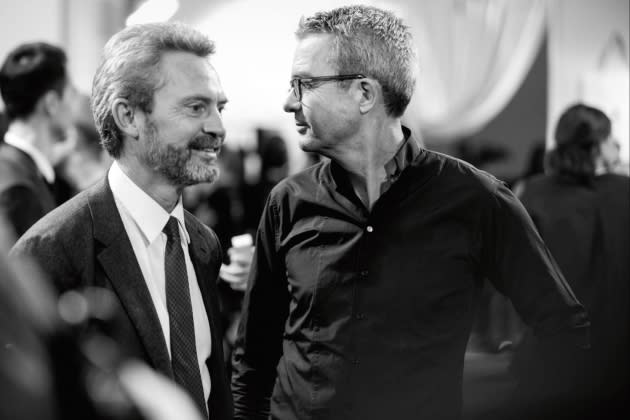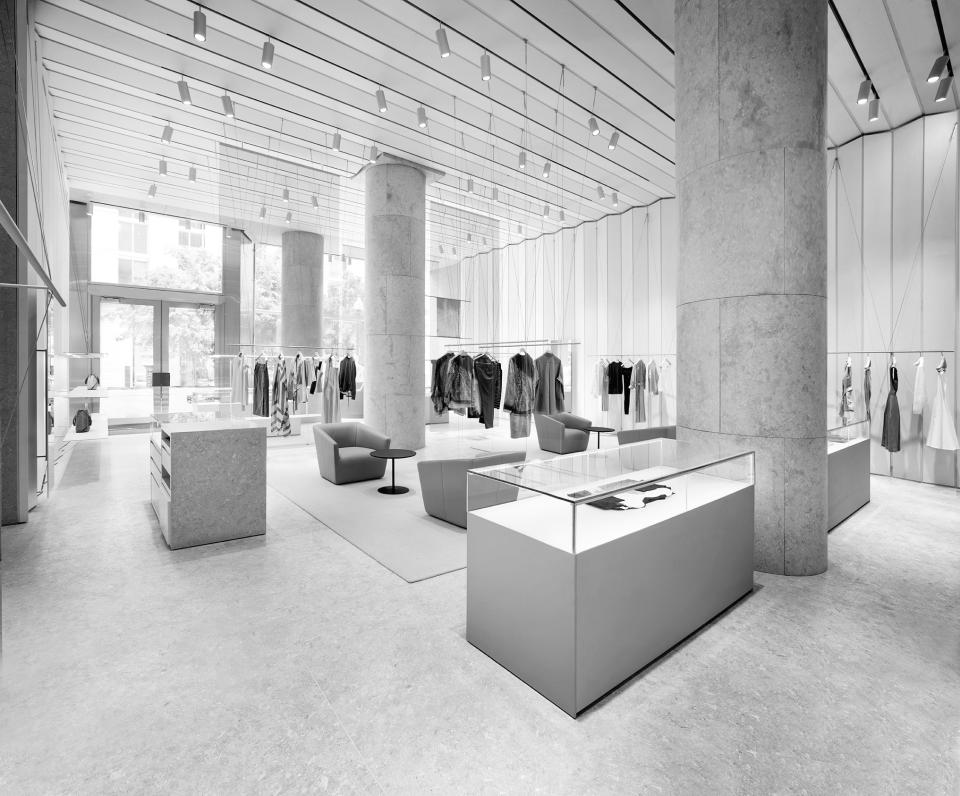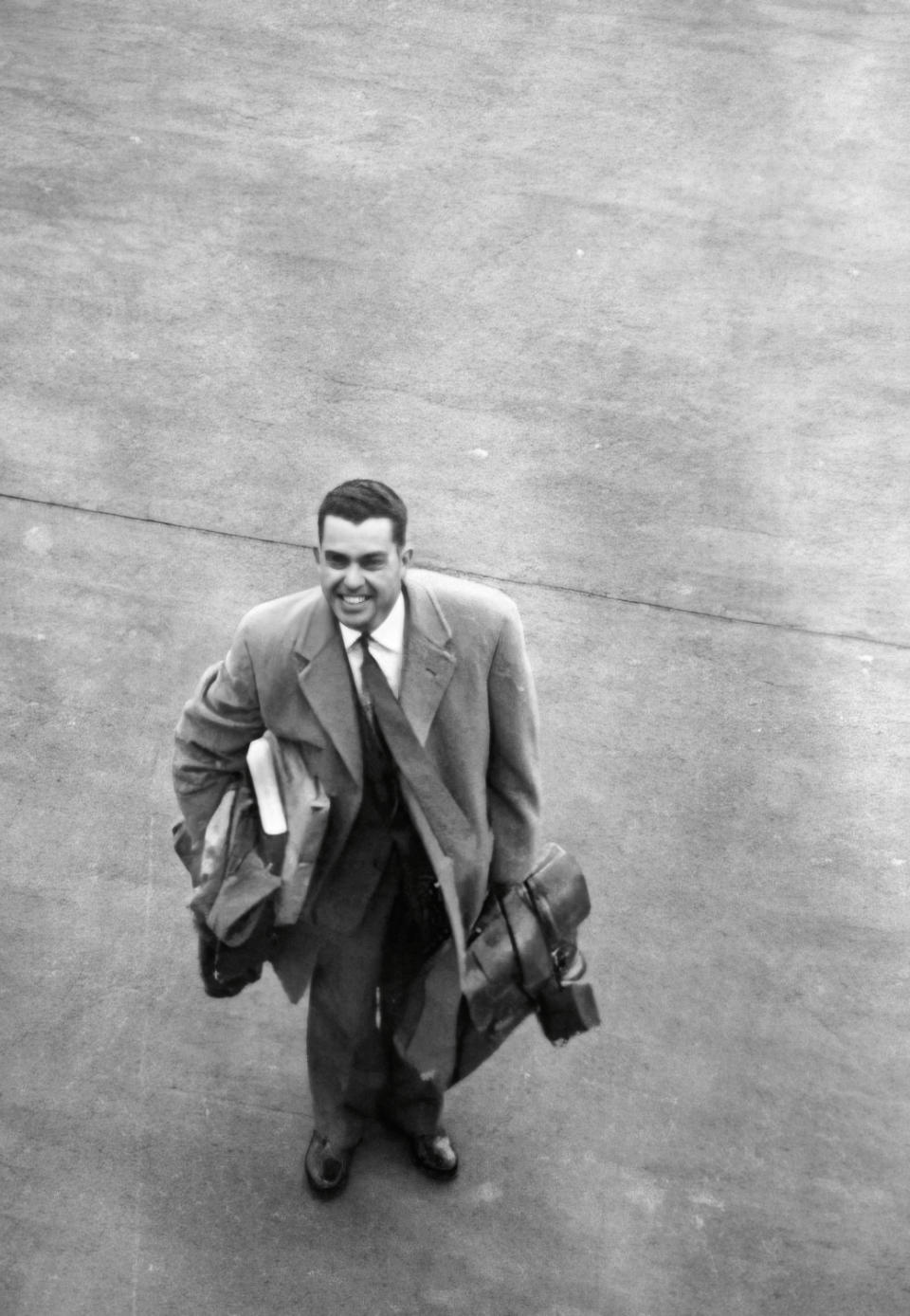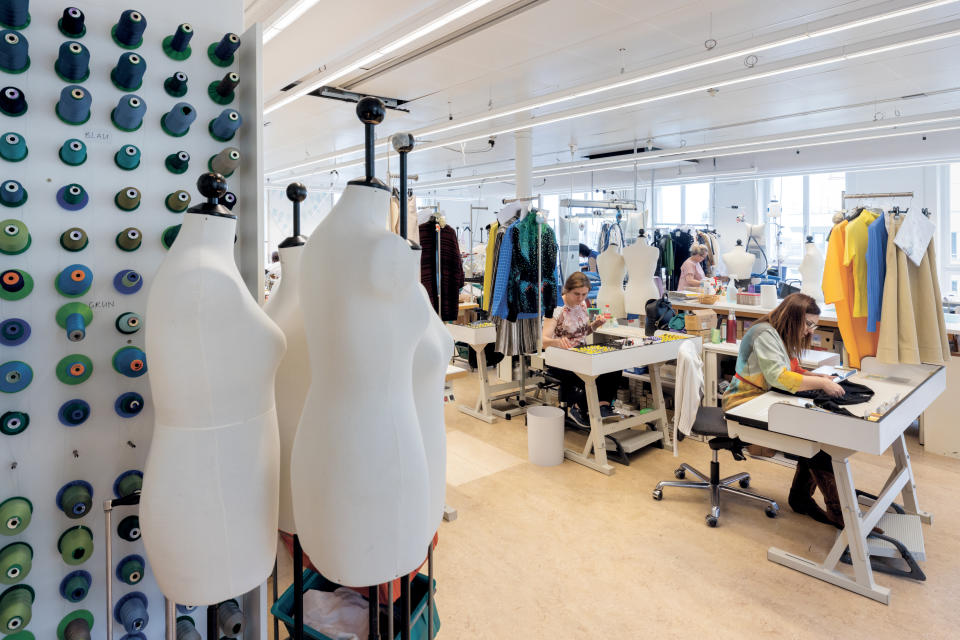Akris, Its Roots in Fine Fabrics, Marks a Century

Akris is perhaps the only house on the international fashion calendar to pin small, ravioli-sized fabric swatches to the sketches tucked into the folder placed on each seat of its runway theater.
During the pandemic, when fashion shows weren’t possible, it dispatched an entire medley of materials on a ring — like an overloaded set of keys, only delicious to the touch.
More from WWD
Both gestures speak legions about the brand’s roots in St. Gallen, Switzerland, an epicenter for textile mills and embroidery houses since the 18th century, and about its soft-spoken creative director Albert Kriemler, who has put exceptional fabrics at the center of his design process for 42 years and counting.
“Fashion is not only visual, it is also tactile,” he says in a new book Akris published to mark its 100th anniversary. “When you put this fabric against your skin, you understand.”
Centenary celebrations kicked off on Oct. 1 with its spring 2023 show, a private dinner, and the release of the 162-page tome “Akris — A Century in Fashion Selbstverst?ndlich.” (The last word translates to “of course” in English.)
There will be anniversary events later this month with Neiman Marcus in Chicago, Illinois, Bergdorf Goodman in New York, and in Washington, D.C., where the Akris boutique reflects a design concept by David Chipperfield. “A new concept for the next century,” Kriemler said.

Anniversary events will continue around the world, reaching a zenith with the May 23 opening of an Akris exhibition at the Museum für Gestaltung Zürich, which is dedicated to industrial design, visual communication, architecture and craft.
“We want to celebrate our customers, celebrate with our teams. Our people, our employees are important to us,” added his brother Peter Kriemler, president of the fashion house for 35 years, who credits the firm’s laser-focus on luxury women’s ready-to-wear for its longevity.
Indeed, the house’s only brand extension came in 2009 when it acquired Comtesse, an elite German handbag-maker favored by international royals and prized for its expertise with handwoven horsehair. Its first volley was the trapezoidal Ai bag.
The executive said shoes would be the next logical category, long before menswear, but he’s in no hurry. “We believe small is beautiful,” he said, flashing a smile.
To be sure, the Kriemlers come from family full of fabric whisperers.
In an interview at the brand’s Paris showroom, Albert Kriemler explained how his grandmother Alice Kriemler-Schoch, founder of Akris, always used the “right and best cotton” for her apron-making business — the origin of Akris — and how her son Max had the “fabulous skill to develop fabrics.”
Indeed, as a teenager Kriemler would accompany his father on his trips to textile fairs.
“For us, fabric is the first playground of creative freedom,” he said, recalling their time at Ideabiella in Como, Italy, in 1978, when they discovered an 800-gram double-face cashmere whose price was eye-watering, but the cloth melted in the hand.

Max Kriemler bought enough to make a coat he christened Alpha, which was the beginning of a “whole cashmere department” at Akris and a cornerstone of its business, Albert Kriemler explained, noting that he continues to use the same quality of cashmere for the brand’s double-face outerwear.
“When a fabric is pure quality, and still looks modern, you should never change,” he said, lauding the artistry and “pure craftsmanship” of its haute fabric suppliers and print designers.
Akris also continues to use a twisted cotton poplin Max Kriemler developed in the ’70s.
Yet the designer is forever hunting for new fabrics that get his creative juices flowing. “I think fashion has to surprise. I’ve learned this over the last 40 years,” he said. “When we are back in St. Gallen, especially in my studio, I feel completely free to create something new.”
As if on cue, a model entered the room wearing a sleek, buttonless navy coat, a navy sweater and narrow pants.
Kriemler leapt from his seat excitedly, eager to let a visitor touch the coat’s marvelous cloth: a twisted cotton denim double-face that has the look and drape of cashmere but is better suited for summer wear.
Next he showed off a vivid green coat in panama-weave silk organza, which dazzled him with its stiff hand and elegant drape.
Then he grabbed an evening column in a silk georgette he’s been using since he was 19. Its caress is like the finest sand running through one’s fingers.
“When I find a fabric, I always have an idea what is feasible,” he said. “That’s why I can only draw when I have the fabric in hand.”
For its anniversary show, Akris decided to include nine looks from the clothing archive, including that landmark 1978 coat, and a sampling of looks by Albert Kriemler from the ’80s and early ’90s.
A fashion shoot featuring those and other vintage pieces became the visual centerpiece of the anniversary book.
Iwan Baan, a Dutch photographer who specializes in architecture, depicts models in the Brutalist architecture of a University of St. Gallen building from 1963 by architect Walter M. F?rderer.
“We were so thrilled with how they turned out. But you know what: I also discovered how modern my clothes from the 1980s were,” Kriemler said.
To wit: The spring 2023 collection not only took its cues from archival looks; Akris will reproduce the nine vintage styles, as it keeps detailed records regarding fabric suppliers. That looks from 30 years ago still look right to Kriemler’s eye today is “really an expression of a timeless modernity we stand for.”
When he decided to include Calais lace, which was a hallmark of his first collection in 1983, he had lengths in the archive to show the supplier Darquer so it could reproduce new rolls to his specifications.

“The lines and proportions need to look totally natural and perfect,” according to Severin Meyer, patternmaker for blazers and jackets since 1997. “Beautiful lapels, a good fit — I love that.”
While the book is edited by the Kriemler brothers, they conscripted an array of contributors to write essays recapping the brand’s artist collaborations, its embroidery know-how, the family history and the prominent women who wear Akris.
Indra Nooyi, the former CEO of PepsiCo., relates that her double-face cashmere sheath dresses by Akris boosted her conference as one of the few female leaders of a Fortune 500 company.
“They say clothes make the man. I tell you something, clothes make the woman, too, if they’re the right clothes,” she said. “No longer did I have to feel uncomfortable about the fact that I was a woman or an immigrant or a person of color.”
Kriemler also lauded the talents and know-how of his team, and the book spotlights nine of his closest collaborators, including patternmakers, print and knit designers.
Knitwear designer Manuela Luthy-Schneider sounds a lot like Kriemler in her forward-looking orientation.
“For me, the current collection is always my favorite. When one collection is finished, I start looking forward to the next one.”
